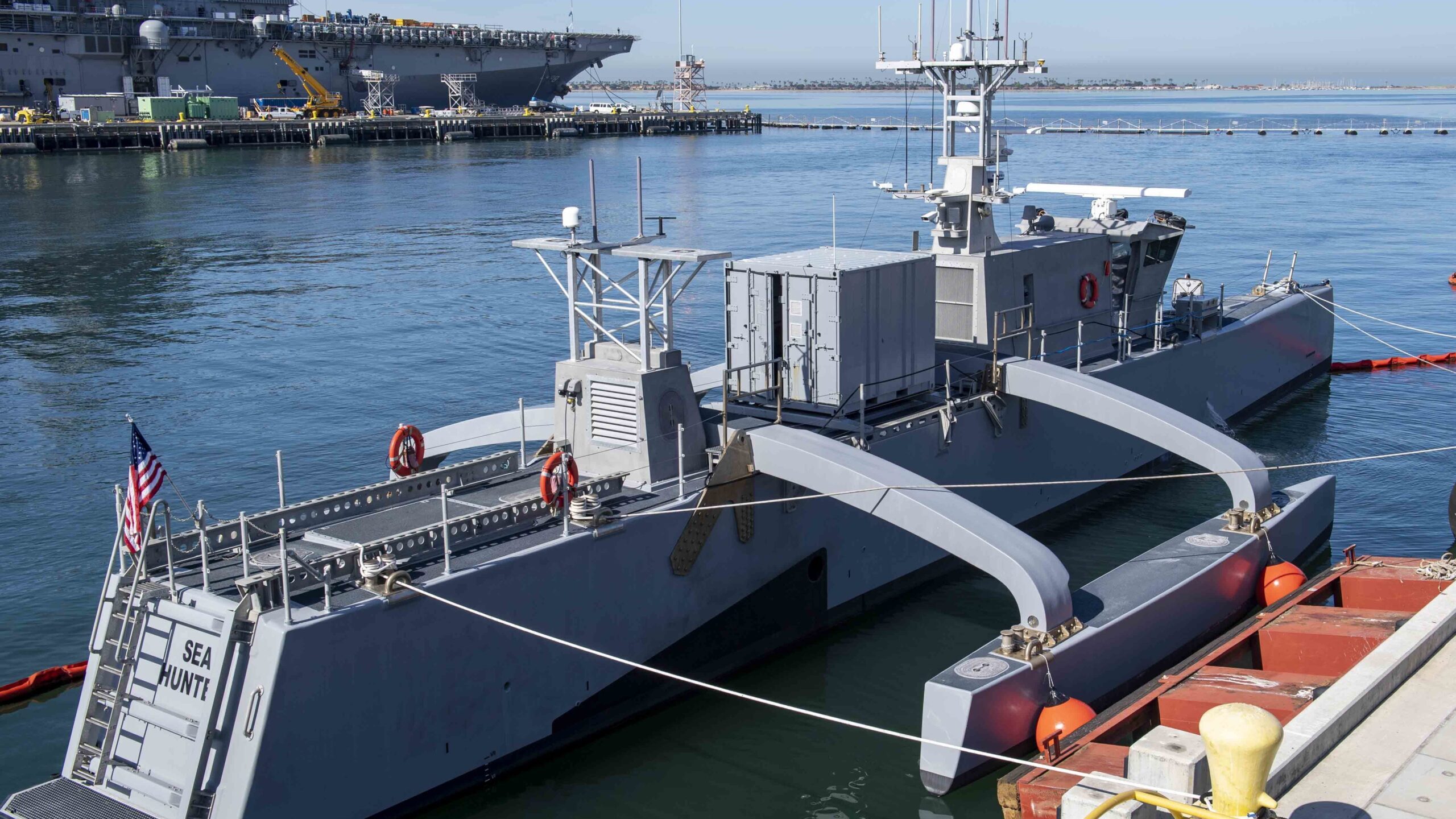
The medium-displacement unmanned surface vessel Sea Hunter sits pierside at Naval Base San Diego, during the Unmanned Surface Vessel Division (USDIV) One Establishment ceremony.(U.S. Navy photo by Mass Communication Specialist 2nd Class Kevin C. Leitner)
WASHINGTON: A group of Navy experts on unmanned systems plans to provide senior leadership with recommendations not just on what to buy, but how to change the way they think about proliferating the technology throughout the fleet.
“What I don’t do is come in and say, ‘Look, I’ve got all this amazing, unmanned technology, go buy stuff,” said Michael Stewart, a senior civilian leading the panel. “It’s the why. Why do you want it? And so what? Why does it matter?”
Stewart is the executive director for the Navy’s Unmanned Task Force (UTF), a group of civilian and uniformed officials selected by Chief of Naval Operations Adm. Michael Gilday last year to help guide the service’s choices as it looks to rapidly introduce militarily useful unmanned systems into the fleet. Formally established in January 2022, the panel is expected to run for 12 to 18 months, according to documents the service provided to reporters.
RELATED: Show, don’t tell: Navy changes strategy to sell unmanned systems to skeptical Congress
The UTF is experimenting both with the technology itself and understanding options on how to buy it. But the real impact the group expects have on the Navy is through recommendations to two key service brass: Vice Adm. Scott Conn, the top requirements officer, and Vice Adm. Francis Morley, the uniformed advisor to the acquisition executive.
Flanked by various executives from the Navy’s research and development enterprise, Stewart today made the case to reporters at the Pentagon that more unmanned systems for their own sake are not going to be useful to the Navy, nor will they win over skeptics in Congress. Rather, the service needs to methodically consider what it’s trying to accomplish and whether an unmanned system is fit for purpose.
“Our going-in position is I start with, ‘What’s the threat?,’” he said. “And we finally get down to what we call a key operational problem… If unmanned would solve that [problem] or AI would contribute to that, then that’s where the [technology] discussion starts.”
The recommendations will not be “cookie cutter,” he added. They could address a wide range of issues, starting with making the case for the technology in the service’s internal budget fights, different ways to go about buying the technology and what authorities or assistance the Navy should seek from Congress.
Stewart also addressed the torrent of criticisms lawmakers have levied against the Navy for being too aggressive in trying to fund unmanned systems prior to maturing the technology. He argued the spirit of the congressional input has been to prevent a dozen untested technologies being relied upon to miraculously converge in the future and work in conjunction flawlessly.
Stewart did not explicitly mention the aircraft carrier Gerald Ford, but the situation he described — where many new technologies must work together on a single platform — very much reflects the ordeal the Navy and lawmakers have gone through in trying to bring that ship online.
Stewart also said lawmakers have been “loud and clear” that the Navy must pay more attention to enabling technologies.
With that in mind, he said the panel has made doing just that a top priority.
“When we look at something — does it have a blinking red risk that we can’t field or we can’t mitigate? And if it does, we pass on it,” he said. “It’s a very deliberate way of focusing on an investment and pushing it forward. And so, I think that message will resonate with Congress.”
Multi-ship amphib buy could net $900M in savings, say Navy, Marine Corps officials
Lawmakers gave the Navy authorities to ink a multi-ship amphib deal years ago, but the service has not utilized that power yet.


























